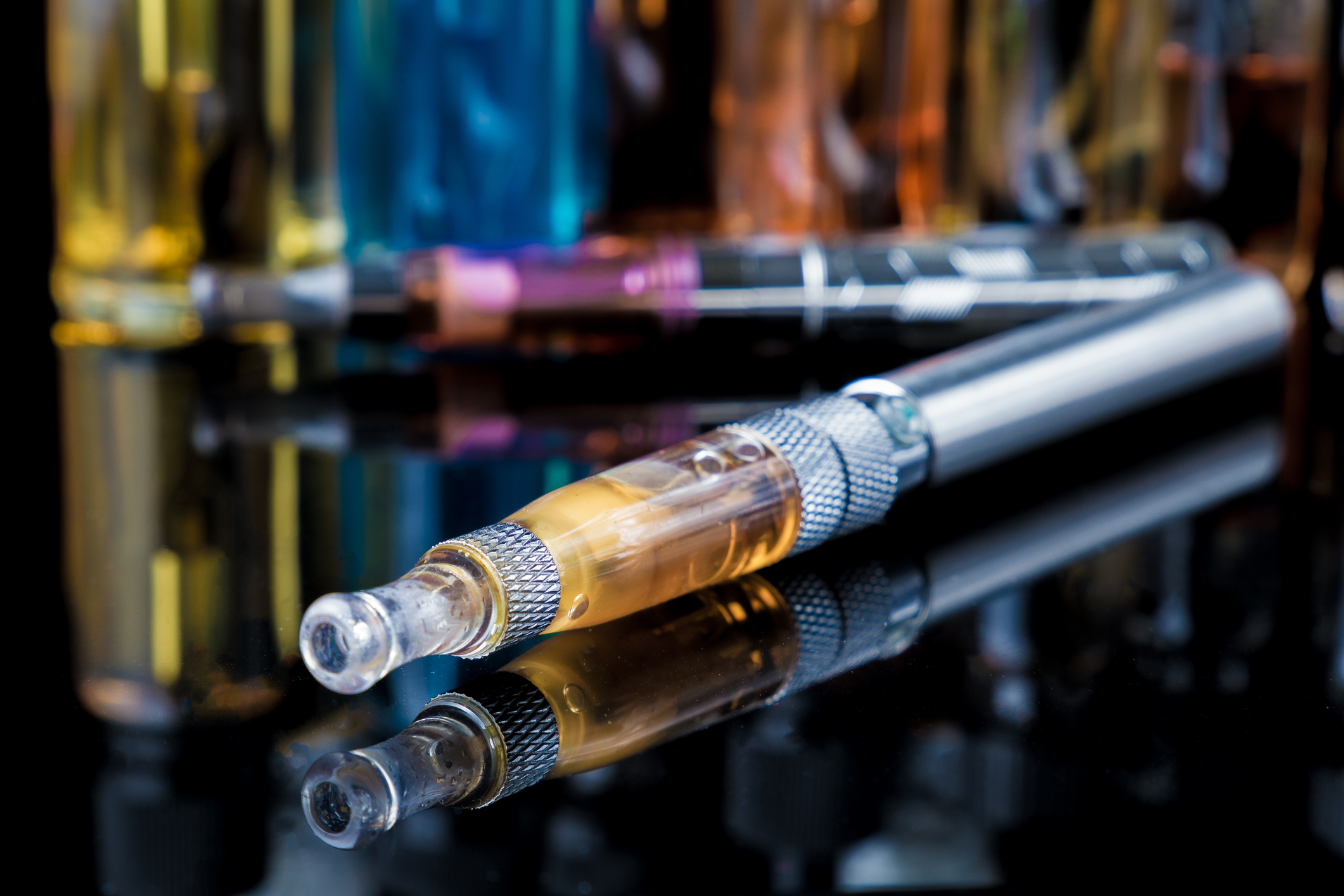
The Trump Administration plans to eliminate flavored vaping products from the market.
The Trump Administration announced last week that soon only one flavor of e-cigarettes will be allowed on the market: tobacco flavor. The U.S. Food and Drug Administration (FDA) specifically plans to crack down on the sale of e-cigarettes and vaping products in flavors like fruit, candy, and mint.
In announcing this new effort, President Donald J. Trump expressed concern about the recent wave of vaping-related lung disease that has swept the country. To date, hundreds of patients have developed acute lung illness after using vape products containing nicotine, marijuana extract, or both. At least six individuals have died from vaping to date.
Experts have not yet identified a particular ingredient or product as the root cause of these lung illnesses, but the Centers for Disease Control and Prevention stated that they “are likely associated with a chemical exposure” because most of the affected patients had no underlying lung infection or disease.
Although vaping-related lung disease is not limited to flavored e-cigarettes, these flavored varieties have disproportionately attracted young adults and teens to these highly addictive products. Younger users often prefer vaping products with non-tobacco flavors such as mint, fruit, and candy. According to data from the National Youth Tobacco Survey, the growing popularity of vaping among teens even caused an overall increase in youth tobacco use in 2018, reversing years of decline.
The move to eliminate flavored vaping products will apparently take the form of guidance issued by FDA within the next several weeks, stated Secretary Alex M. Azar II of the U.S. Department of Health and Human Services. The guidance will “prioritize” the enforcement of existing regulations requiring companies to obtain authorization for vaping products from FDA before selling them to consumers. These regulations were put in place in 2016 when FDA issued a rule deeming e-cigarettes and vaping products to be tobacco products falling within the scope of FDA’s regulatory authority.
E-cigarettes and vaping were popular before 2016, but they were not initially regulated by FDA because they fell outside the existing definitions for tobacco products. The 2016 rule specified that companies selling vaping products would have two years to obtain authorization from FDA to continue selling their products. But many companies failed to comply with the requirements, and agency enforcement of the rule was inconsistent.
The decision to prioritize enforcing the 2016 regulation is not FDA’s first attempt to curb the spread of flavored e-cigarettes among youth. For example, in recent years the agency has issued more than 8,600 warning letters and more than 1,000 monetary penalties to retail stores for selling vaping products to minors. In addition, FDA has sent warning letters to e-cigarette manufacturers for packaging, advertising, and marketing methods that appeal to children and teens. These previous enforcement efforts have spurred change in the industry, with some firms voluntarily pulling their flavored products off the shelves of retail stores where minors are more likely to purchase them. But teen and youth vaping continues to rise.
The Trump Administration intends to enforce the authorization requirements selectively by targeting unauthorized flavored products to eliminate flavors like mint, fruit, and candy that are popular among teen users. Tobacco flavored products will still be permitted in the market.
This week, Governor Andrew M. Cuomo also announced a plan to ban flavored e-cigarettes in New York State and issued an executive order to establish public-awareness campaigns about the dangers of vaping.
Some adults have credited e-cigarettes as a pathway for helping them quit traditional smoking. Indeed, FDA itself has acknowledged that they might be a better alternative for current smokers who want to avoid traditional cigarettes’ carcinogenic properties. But the full health effects from exposing lungs to vaporized chemicals may not yet be fully known—and the spate of lung disorders related to vaping remains a major concern. Moreover, selling vaping products in non-traditional flavors has helped to attract a new generation of first-time nicotine users who will now be addicted to the chemical.
According to Secretary Azar, new data from the National Youth Tobacco Survey show that 8 million adults and 5 million children are current e-cigarette users. Over the past eight years, the use of traditional cigarettes has declined among middle and high school students, but this reduction has been accompanied by even larger growth in vaping. More than a quarter of youths reported using e-cigarettes within 30 days of the survey, as opposed to less than 6 percent who reported using traditional cigarettes. And of those who use e-cigarettes, approximately a quarter are heavy users who vape more than 20 days per month.
President Trump emphasized that the “big business” of vaping should not be allowed to impact children and teens. Secretary Azar also stated that if young e-cigarette users begin to increase their use of tobacco flavored products after the ban takes effect, then the agency “will take enforcement action there also.”



